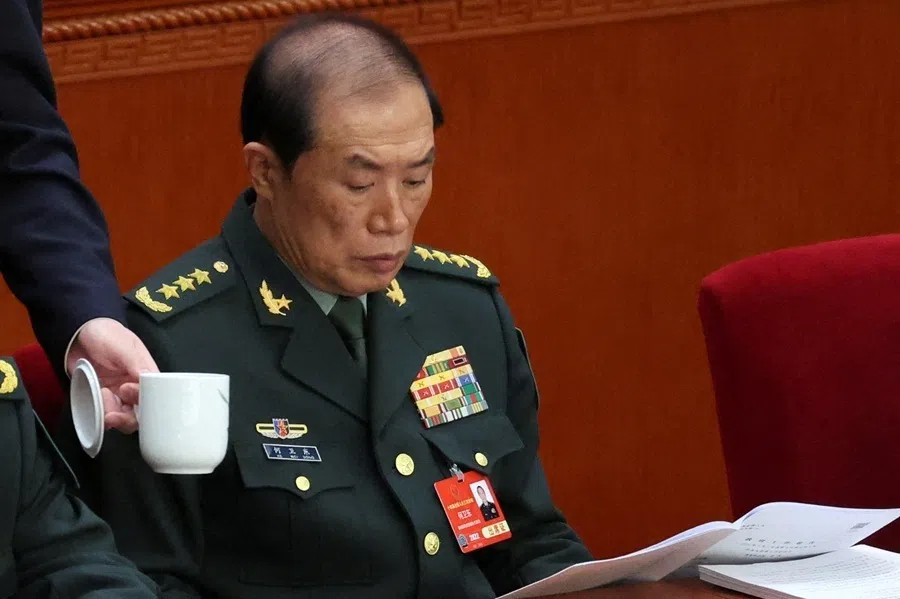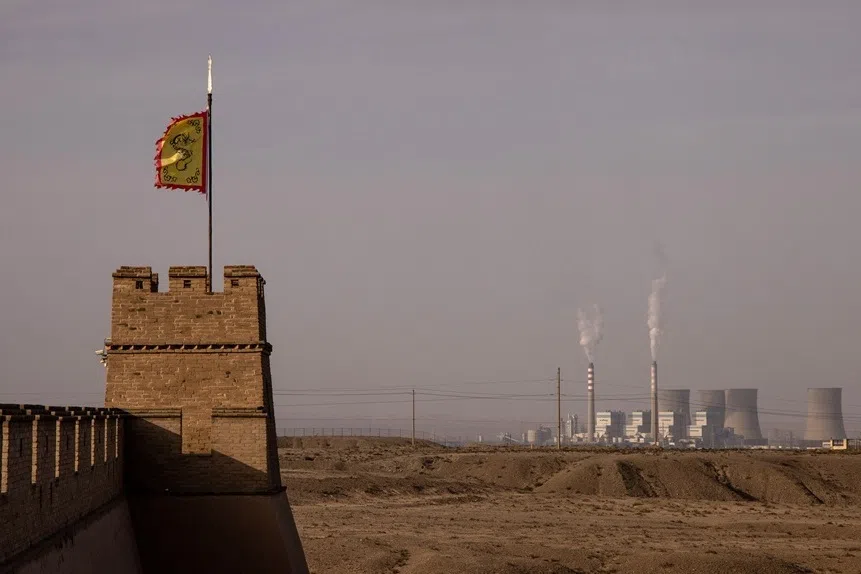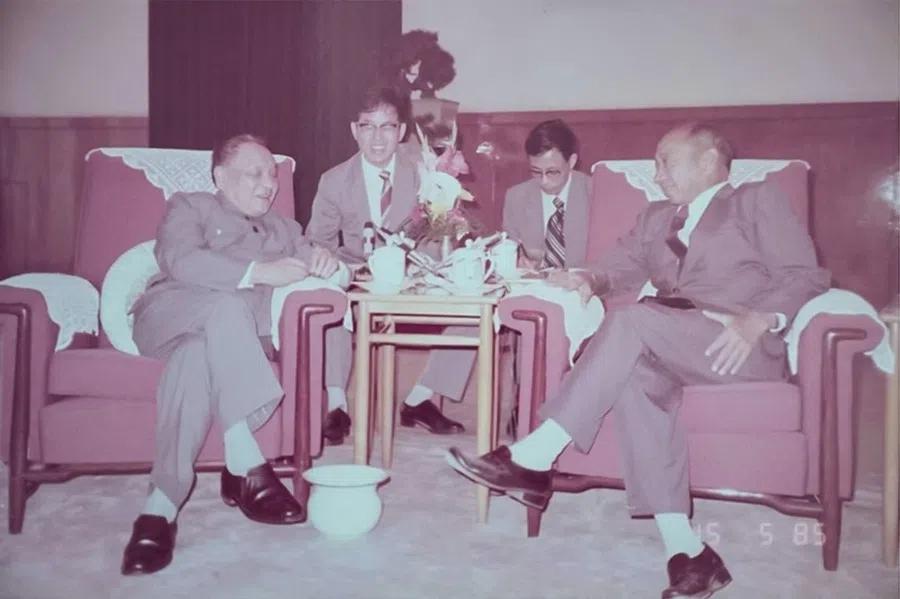Covid-19: China's shifting narrative and the role of Southeast Asia
Did Covid-19 originate in Wuhan? Were ASEAN countries friendly to China in this fight against the pandemic? Who provided aid to whom? Lye Liang Fook examines how China's narrative has changed since the coronavirus epidemic began and to what extent Southeast Asia has played a role in this process.
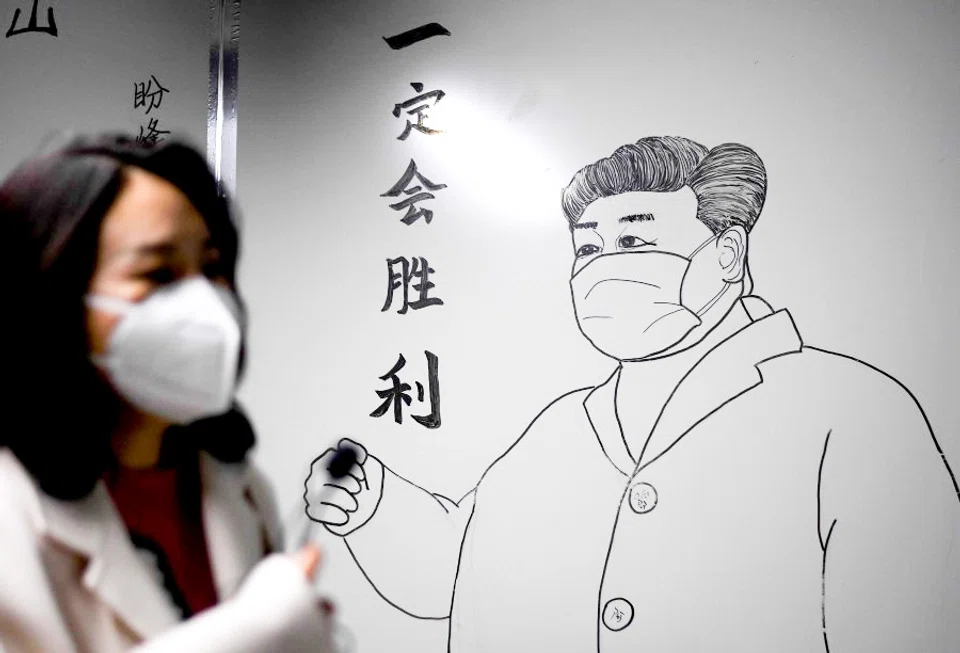
China's initially slow response to the coronavirus outbreak in Wuhan soon gave way to quick and draconian measures especially after Chinese President Xi Jinping issued a public directive on 20 January 2020 calling for "resolute efforts" to curb the coronavirus spread. Less than two months later, in March 2020, the long-awaited visit of President Xi to Wuhan took place, an indication that the measures introduced had borne fruit.
Southeast Asia as a whole was portrayed by Beijing to be standing with China in its internal fight against the coronavirus.
China's narrative on the coronavirus fight evolved with the progress in curbing the disease. In the initial stages, the official line focused on containing the coronavirus spread within China and the source was deemed to have started from a specific location, i.e. the Huanan Seafood Wholesale Market in Wuhan. At a later stage, when China had brought the situation under control, and when cases outside China began to rise, Beijing started to cast doubts on the origins of the coronavirus.
Southeast Asia as a whole was portrayed by Beijing to be standing with China in its internal fight against the coronavirus. When China began to extend aid to other countries to fight the global spread of the coronavirus, Southeast Asia was again featured as an important part of this effort.
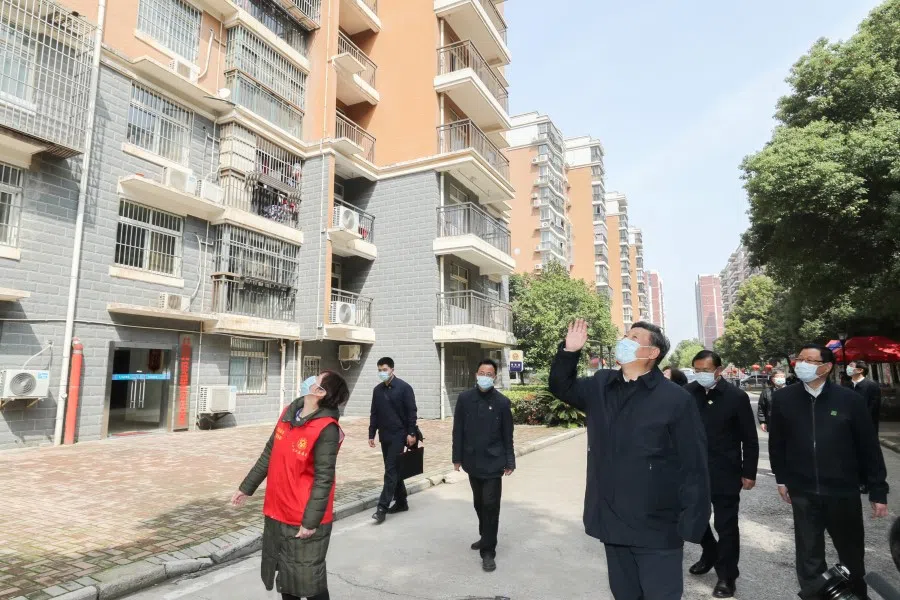
Initial stage: China values information disclosure and the virus came from Wuhan
China was initially focused on containing the coronavirus spread within the country. On 20 January 2020, President Xi Jinping called for "resolute efforts" by the Chinese Communist Party and the government to curb the epidemic. After Xi's public exhortation, measures to fight the coronavirus were ramped up. Wuhan City went into lockdown on 23 January.
At that time, the narrative from China was guarded and, to some extent, defensive in nature, especially regarding criticisms that the relevant authorities had been slow to respond to the coronavirus.
Two days later, on the first day of the Lunar New Year, on 25 January, Xi convened a Political Bureau Standing Committee meeting on the situation. At the same meeting, he announced the forming of a central group headed by Premier Li Keqiang to fight the coronavirus under his direction. It was also after 20 January that China's National Health Committee began to provide daily updates on the number of confirmed and suspected coronavirus cases across the country.
At that time, the narrative from China was guarded and, to some extent, defensive in nature, especially regarding criticisms that the relevant authorities had been slow to respond to the coronavirus. The quasi-official Global Times mentioned on 20 January that there were "some people" who suspected that the government did not provide relevant information in a "timely manner". It went on to explain that since the epidemic situation in China remained unclear and that China had not entered into a state of mobilisation at that time, the government had released information with the aim of ensuring "stability and accuracy", instead of "making predictions that could result in panic". There was tacit admission that the government had not been forthcoming with its information release.
At the official level, however, Chinese authorities denied that they had withheld information and under-reported the scale of the coronavirus situation. At a State Council Information Office press conference on 22 January, a foreign correspondent asked for the reason behind the spike in the number of reported cases and whether the government had withheld information. Avoiding a direct response, Xu Shuqiang (director of the Emergency Management Office of the National Health Commission) said the government attached much importance to information disclosure.
Another aspect of China's early response was that it acknowledged that the coronavirus originated from Wuhan.
Separately, China's foreign ministry spokesperson Geng Shuang said that China had informed the World Health Organisation, relevant countries and other organisations of the outbreak in a "timely manner" and maintained "close communication" with them.
China highlighted how other countries had positively appraised its quick and vigorous response to the disease. This suggested widespread foreign support for its anti-coronavirus measures. Indirectly, it indicated some degree of insecurity that China should need foreign endorsement for what it was doing internally.
Another aspect of China's early response was that it acknowledged that the coronavirus originated in Wuhan. The Huanan Seafood Wholesale Market in Wuhan, which sold and culled wildlife, was shuttered and cleaned up. Zhong Nanshan, a leading figure in China's fight against SARS in 2003 and who has been actively involved in the current coronavirus fight, said on China's Central Television on 20 January that a large number of cases could be traced to two particular locations in Wuhan involved in the wildlife trade. He confidently said that the virus had originally spread from wildlife to humans but had progressed to the stage of human-to-human transmission.
China was also quick to deny that the coronavirus had leaked from a biological facility at the Wuhan Institute of Virology. A senior official from the biological facility reportedly slammed such a conspiracy theory. Separately, Geng Shuang, China's foreign ministry spokesperson, highlighted a statement from leading foreign medical experts carried by Lancet, an authoritative medical journal, which strongly condemned conspiracy theories and affirmed the overwhelming conclusion by medical experts that the coronavirus originated from wildlife.
From the above, it would appear that China had accepted that the coronavirus had originated in Wuhan.
Latter stage: China bought precious time for the world and is a friend in need
Beginning in the later part of February 2020 (when the number of new confirmed cases in China saw a significant drop while those in other countries such as in South Korea, Italy and Iran rose), the narrative shifted. It picked up momentum and on certain occasions became more strident following President Xi's long-awaited visit to Wuhan on 10 March 2020.
A fresh angle was that China's implementation of tough but effective measures within its own borders helped slow down the coronavirus spread outside China. China further asserted that its close communication and its sharing of information with the World Health Organisation and other countries and regions, had helped them to better respond to the global pandemic. China was now saying that its efforts had "bought precious time for the world".
Another assertion now made was that China is a reliable and helpful partner to other countries fighting the coronavirus. This is a variation on China's vision of a shared future where countries, apart from engaging in mutually beneficial initiatives, need to band together to face common threats. So far, China has extended various forms of assistance including medical teams, test kits, medical equipment and supplies to numerous affected countries in Europe, Asia, Africa, and the Americas. In addition to material and personnel aid, China has also held video conferencing sessions to share its coronavirus experiences and findings.
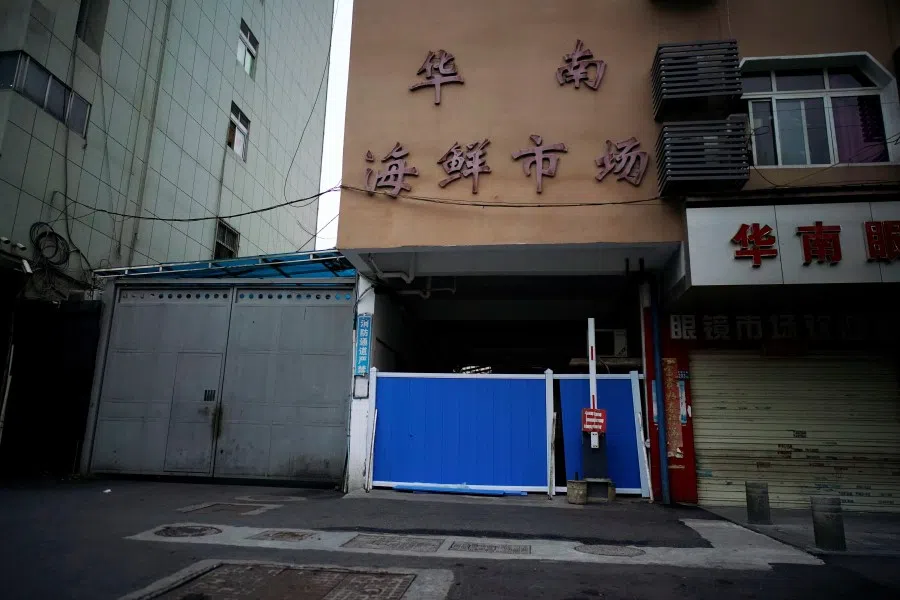
China: The coronavirus may not have originated in China
China now started to question and even strongly refute the view that the coronavirus originated in China. It began with Zhong Nanshan saying at a press conference that although the coronavirus first appeared in China, this did not mean that it originated in China. He said it was not clear where the coronavirus came from and that the coronavirus was not necessarily hosted by the pangolin (that was traded at the Huanan Seafood Wholesale Market).
Other sources soon mounted a more concerted campaign pushing this view, suggesting high-level endorsement of the effort:
• On 29 February, a Global Times article acknowledged that the epidemic "first broke out" in China, but asserted that there was so far "no conclusion" by the scientific community on "where the virus came from".
• On 4 March, Zhao Lijian, China's newly-minted foreign ministry spokesperson, reiterated at a regular press conference that "no conclusion has been reached on the origin of the virus, as relevant tracing work is still underway".
• On 8 March, Lin Songtian, the Chinese ambassador to South Africa, said on Twitter that "although the epidemic first broke out in China, it did not necessarily mean that the virus is originated from China, let alone 'made in China'".
• On 12 March, Zhao Lijian was more strident on Twitter when he suggested that "patient zero" began in the US. He even surmised that it "might be the US army who brought the epidemic to Wuhan". He called on America to be "transparent", to "make public your data" and asserted that the "US owe us an explanation".
(China) has accused the US of engaging in a blame game targeting China.
The pushback by China is probably motivated by a number of factors including Beijing's own success in curbing the coronavirus, its reaction to US efforts to reiterate that the coronavirus started in China, as well as what it regards as US attempts to divert attention away from America's own lacklustre response to the coronavirus spread. In particular, China was riled by US President Donald Trump, Secretary of State Mike Pompeo and US congressmen referring to the coronavirus as the "Chinese virus" or the "Wuhan virus", and insisted that the neutral WHO terminology of Covid-19 be used. It has accused the US of engaging in a blame game targeting China.
China: ASEAN countries stand with China
In this shifting narrative, Beijing's orientation has been global in nature and in particular, it has paid much attention to the words and actions of the US. This is not at all surprising as the US remains the most important strategic player in China's eyes. Within this context, ASEAN and individual ASEAN Member States (AMS) do not feature prominently, although certain aspects need to be highlighted.
A Xinhua article carried Singapore Prime Minister Lee Hsien Loong's remarks calling on countries to work together and to keep anti-Chinese sentiments in check.
Throughout China's fight against the coronavirus, and especially in the initial stage, ASEAN and its members were important in the Chinese narrative in two key ways. First, Beijing stressed that these countries were fully behind China's anti-coronavirus effort. Chinese official media cited remarks by leaders of Vietnam, Cambodia, Laos, Indonesia, Malaysia, Myanmar, Brunei, the Philippines, Thailand and Singapore expressing support for and solidarity with China.
A Xinhua article carried Singapore Prime Minister Lee Hsien Loong's remarks calling on countries to work together and to keep anti-Chinese sentiments in check. In particular, it mentioned PM Lee as saying: "The virus may have started in Wuhan but it doesn't respect nationality or race. It doesn't check your passport before it goes into your body and anybody can be infected."
Wang Yi and his ASEAN counterparts joined hands in the traditional ASEAN-style handshake to "cheer for Wuhan and China".
Among the AMS, the country given the most coverage was Cambodia, especially after Prime Minister Hun Sen became the first foreign leader to visit China, which he did on 5 February, after the coronavirus began spreading. President Xi described the visit as a show of solidarity and a reflection of the all-weather relationship between the two countries. Cambodia further refrained from imposing travel and flight restrictions on China and from evacuating its nationals from China. Hun Sen was even prepared to visit Cambodian students in Wuhan during his visit to Beijing.
Second, China highlighted its commitment to work with ASEAN as well as ASEAN's support for China in fighting the coronavirus. Foreign Minister Wang Yi met his ASEAN counterparts at the Special ASEAN-China Foreign Ministers' Meeting on the coronavirus in Vientiane on 20 February. Chinese official accounts said the meeting started with a video on the "Chinese people's unity in the fight against the epidemic" and the "expression of sympathy and support from leaders of the 10 ASEAN countries". They further mentioned that after the meeting, Wang Yi and his ASEAN counterparts joined hands in the traditional ASEAN-style handshake to "cheer for Wuhan and China".
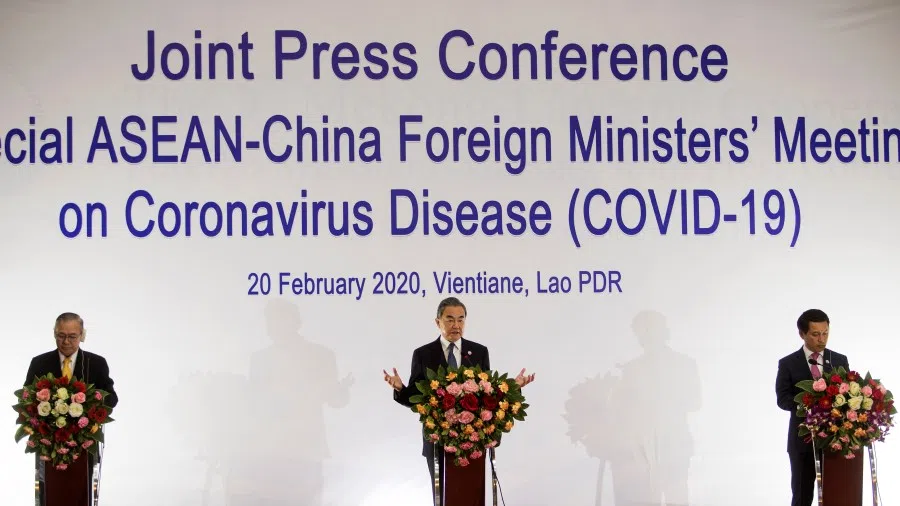
Beijing further advocated closer coordination and cooperation between China and ASEAN to fight the coronavirus. At the Special ASEAN-China Foreign Ministers' Meeting, Wang Yi proposed that China and ASEAN enhance coordination among their health, quarantine, transportation and border control agencies. He further suggested setting up China-ASEAN Reserve Centres for stockpiling provisions for epidemic control. He seemed receptive to a suggestion by some of his ASEAN counterparts for a Special China-ASEAN Leaders' Meeting at an appropriate time to elevate the level of cooperation. This appeared aimed at pre-empting criticisms that the Special ASEAN-China Foreign Ministers Meeting was not pitched at as high a level as in 2003 when leaders from ASEAN and China met almost immediately to discuss a joint response to SARS.
China's aid provision to ASEAN countries
On China's aid provision, the AMS were portrayed as key recipients of Chinese assistance although the bulk of it seemed to have gone to Europe as the latter has become the epicentre of the outbreak (see Annex). Nevertheless, the Philippines and Cambodia were among the first AMS to receive China's aid. In early February 2020, when China was still trying to contain the coronavirus spread, it donated 200,000 masks and offered to share medical information and findings on the coronavirus with the Philippines. In March 2020, China provided Cambodia with an unspecified amount of detection reagent, hazmat suits, surgical masks, and other related materials.
China's first offer of assistance to the Philippines and Cambodia is partly due to these two countries being strategically more closely aligned with China. Another important reason is that these two AMS were among the first in rendering assistance to China. On 26 January, the Philippines had donated 3.16 million masks (not a small number) to China, while Cambodia donated 5,000 masks on 5 February, largely from families whose children had benefitted from free medical treatment from China. Beyond this offer, Cambodian Prime Minister Hun Sen had lent his personal imprimatur to China's coronavirus fight by visiting Beijing in February.
Cambodia and China even held their fourth joint exercise, known as "Dragon Gold 2020", in Kampot province in March 2020. China has progressively extended assistance to other AMS which have also earlier provided aid to China:
• Malaysia received the first batch of medical supplies, including 5,000 face masks and 10,000 surgical masks, which were delivered to Sungai Buloh Hospital, a hospital designated for coronavirus patients, in March 2020. An additional 100,000 face masks were donated by the China Asia Economic Development Association.
• In Thailand, Thai medical experts have reportedly been in contact with Zhong Nanshan on the clinical treatment of coronavirus patients and test kits have been sent. Face masks, protective suits and face shields have also been donated.
• Indonesia has received 800,000 test kits, tens of thousands of medical gloves and 17 tonnes of other epidemic prevention supplies.
• Myanmar, Laos, and Brunei have also received various forms of assistance from China. [Note: All AMS provided some form of assistance to China, including Vietnam and Singapore. But Vietnam and Singapore have apparently not received any material assistance from China as they are in a position to fight the coronavirus on their own].
To ban or not to ban
At one point, however, China took issue with some AMS for imposing travel restrictions on travellers from China. This was evident from Chinese foreign minister Wang Yi's remarks at the Special ASEAN-China Foreign Ministers Meeting when he called on AMS to "resume normal people-to-people exchanges and practical cooperation at an early date, in line with respective national conditions".
However, China's pressure on AMS was considerably milder than its outright criticisms of the US which it accused of being the "first to evacuate personnel from its consulate in Wuhan" and the "first to impose a travel ban on Chinese travellers". Subsequently, as the coronavirus spread to other parts of the world, and with China grappling with the new threat of imported cases, China has soft-pedalled on this issue. China has acknowledged that the restrictive measures by other countries were aimed at protecting the health and security of their respective citizens, and at safeguarding regional and global public health security. On its part, it has also practically stopped all entry by foreigners and significantly reduced foreign flights into the country.
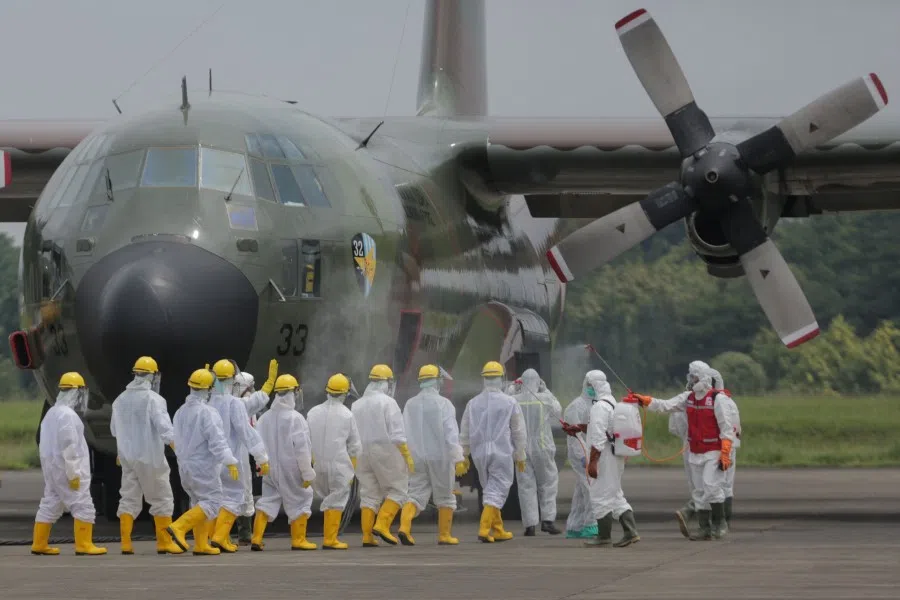
ASEAN's role
China's narrative on the coronavirus fight evolved in line with internal progress at tackling the coronavirus. In general, there has been a discernible shift from a cautious and defensive posture to one where it takes umbrage with the suggestion that the coronavirus originated in China. In this shift, it singled out the US. ASEAN and AMS did not feature in this aspect.
ASEAN and AMS mattered most in terms of China's effort to portray them as standing hand-in-hand with Beijing in the coronavirus fight, a thrust particularly evident in the early stage. Subsequently, when China turned the corner in its coronavirus fight and began to extend aid to other countries, the AMS came into focus as part of China's contribution to global efforts to fight the coronavirus.
More Chinese assistance to the AMS in the near future is in line with Beijing's narrative that it attaches great importance to ties with not only AMS but also with ASEAN as a whole. This message is likely to be reinforced in 2020, a year during which China celebrates milestones in its relations with Myanmar, Indonesia, Vietnam, Thailand, the Philippines and Singapore. The first step was taken when President Xi visited Myanmar on his first overseas trip in 2020. Although China's interaction with AMS may have been momentarily disrupted by the coronavirus, Beijing is already laying the groundwork for ties to pick up through its coronavirus assistance to AMS.
This article was first published as ISEAS Perspective2020/26 "The Fight Against COVID-19: China's Shifting Narrative and Southeast Asia".

